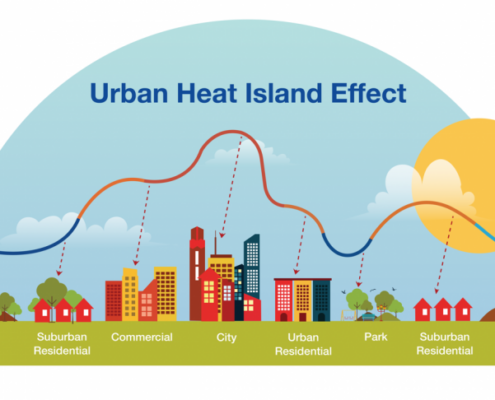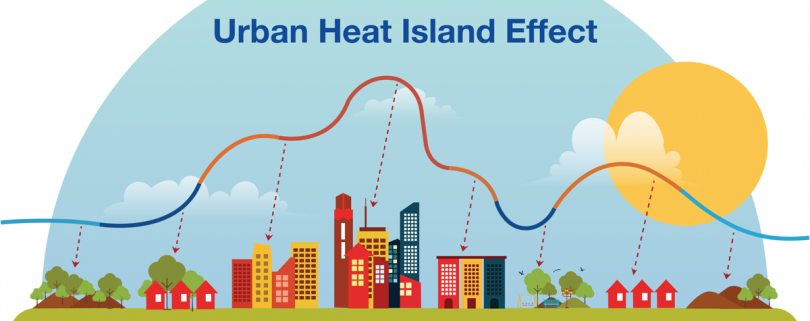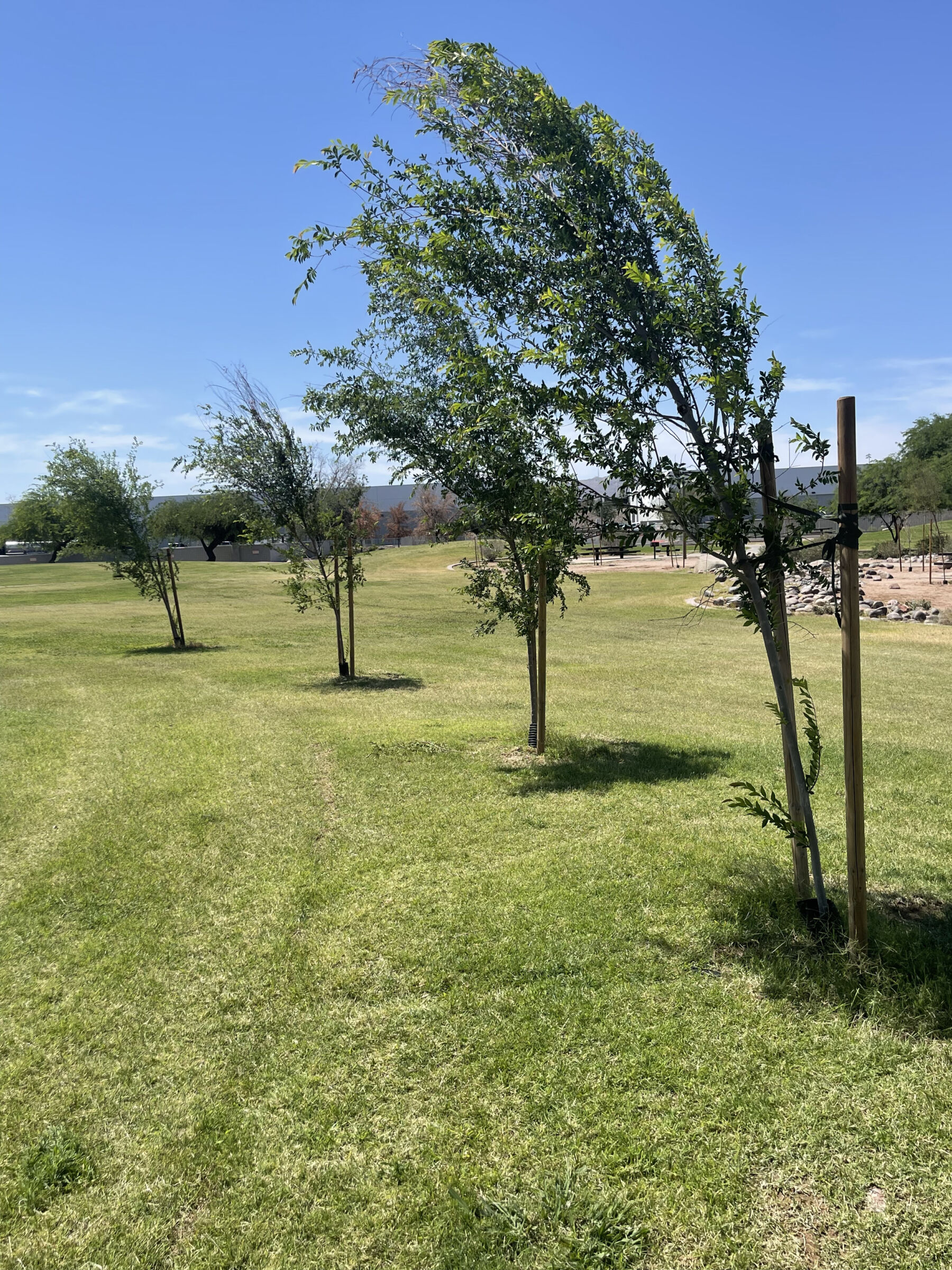Heat Islands Inside the Impact
Heat islands are urban areas where temperatures are noticeably higher than in surrounding rural or suburban locations. These elevated temperatures occur where buildings, roads, and other infrastructure absorb and re-emit the sun’s heat especially in places where trees, shrubs, and turf are sparse or nonexistent.
According to the U.S. Environmental Protection Agency (EPA), temperatures in cities affected by the heat island effect can be 1 to 7°F higher during the day and 2 to 5°F higher at night compared to nearby rural areas. Humidity levels and population density also influence the intensity and frequency of heat islands.
Why It Matters
Heat islands have far-reaching effects not only on the environment but also on resource consumption and human health. Here’s how:
Increased Energy Consumption
As temperatures rise, so does the need for air conditioning. For every 2°F increase, electricity demand can rise by 1 to 9%. This places significant stress on the electrical grid, potentially leading to brownouts, blackouts, or other power disruptions especially during periods of prolonged heat.
Higher Emissions of Air Pollutants and Greenhouse Gases
Increased energy use, particularly from fossil fuel–powered plants, results in higher emissions of greenhouse gases like carbon dioxide, as well as air pollutants that affect human health.
Heat islands also contribute to the formation of ground-level ozone, a harmful pollutant created when sunlight and heat react with nitrogen oxides (NOx) and volatile organic compounds (VOCs) in the air.
Compromised Human Health and Comfort
Elevated temperatures increase the risk of heat-related illnesses and death. Heat islands exacerbate this by reducing overnight cooling, placing additional strain on the body.
Those most at risk include:
- Older adults
- Young children
- Outdoor workers
- Low-income individuals
- People with chronic illnesses, mobility issues, or certain medications
According to the Centers for Disease Control and Prevention (CDC), an average of 702 heat-related deaths occurred each year between 2004 and 2018 in the U.S.
Impaired Water Quality
It’s not just the air and temperature that are affected, water quality suffers too. When it rains on hot surfaces like pavement and rooftops, the runoff that flows into storm sewers is significantly warmer. This heated water can raise the temperature of rivers, streams, and lakes by as much as 18°F, shocking aquatic ecosystems and, in some cases, leading to fish kills and habitat disruption.
Nature as a Solution
Fortunately, there’s a natural remedy: green spaces. Trees, shrubs, and well-maintained turf help cool the environment through shade and evapotranspiration, which can reduce urban temperatures, cut energy demand, and improve overall quality of life.
Combatting the Heat Island Effect starts with smart, sustainable landscaping and urban planning. Visit ProjectEverGreen.org to learn how green spaces can help make our cities cooler, healthier, and more livable for everyone.
Discover the Power of Green Spaces
Green spaces do more than just beautify our neighborhoods – they help clean the air we breathe, cool our cities, reduce carbon levels, and promote healthier, more connected communities. Lawns, trees, and shrubs may seem simple, but together, they form powerful natural systems that benefit both people and the planet.
To help you understand the impact of your own green space, Project EverGreen invites you to explore the Clean Air Calculator™ – a free, web-based tool that measures the environmental benefits of green spaces on your property.
Whether you’re a homeowner, landscape professional, golf course superintendent, sports field or park manager, or property owner, this innovative tool makes it easy to see the real-world impact of the green spaces you care for.
See how your green space makes a difference. Try the Clean Air Calculator today:
https://projectevergreen.org/clean-air-calculator/





